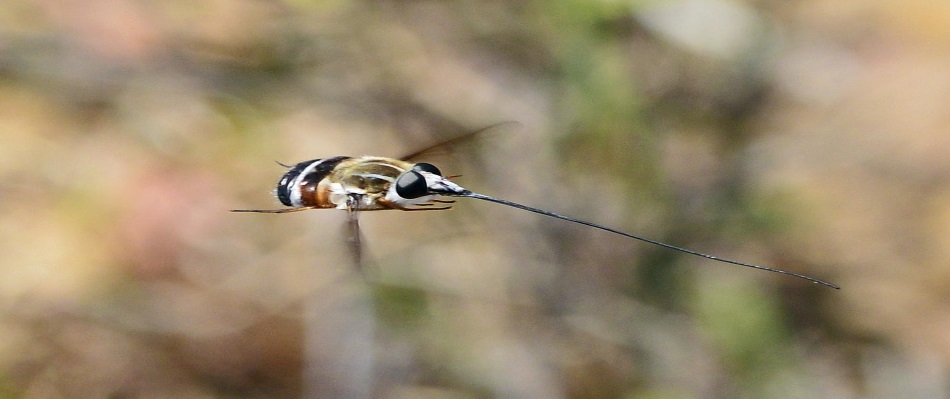Floral biology of Hesperantha (Iridaceae: Crocoideae): How minor shifts in floral presentation change the pollination system. P Goldblatt, I Nanni, P Bernhardt, JC Manning 2004 Annals of the Missouri Botanical Garden 91: 186–206.
has this interesting insight (I might mention that it follows a few paragraphs debunking floral syndromes, so perhaps a bit of salt might be necessary):
As described in the genera Babiana, Gladiolus, and Lapeirousia, tubular flowers that are
-
pink to the human eye (e.g., Heserantha. brevicaulis, H. grandiflora, H. huttonii, H. woodii) are most likely to be pollinated by the Nemestrinidae: Prosoeca ganglbauri and Stenobasipteron wiedemannii.
-
intense blue to purple flowers (e.g., H. latifolia, H. oligantha) are pollinated by Prosoeca peringueyi or Prosocea sp (undescribed).
-
Pale yellow to cream, tubular
...עוד ↓
Floral biology of Hesperantha (Iridaceae: Crocoideae): How minor shifts in floral presentation change the pollination system. P Goldblatt, I Nanni, P Bernhardt, JC Manning 2004 Annals of the Missouri Botanical Garden 91: 186–206.
has this interesting insight (I might mention that it follows a few paragraphs debunking floral syndromes, so perhaps a bit of salt might be necessary):
As described in the genera Babiana, Gladiolus, and Lapeirousia, tubular flowers that are
-
pink to the human eye (e.g., Heserantha. brevicaulis, H. grandiflora, H. huttonii, H. woodii) are most likely to be pollinated by the Nemestrinidae: Prosoeca ganglbauri and Stenobasipteron wiedemannii.
-
intense blue to purple flowers (e.g., H. latifolia, H. oligantha) are pollinated by Prosoeca peringueyi or Prosocea sp (undescribed).
-
Pale yellow to cream, tubular flowers are more likely to be pollinated by long-proboscid Tabanids in the genus Philoliche.
פחות ↑






